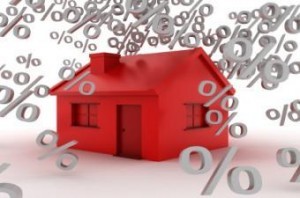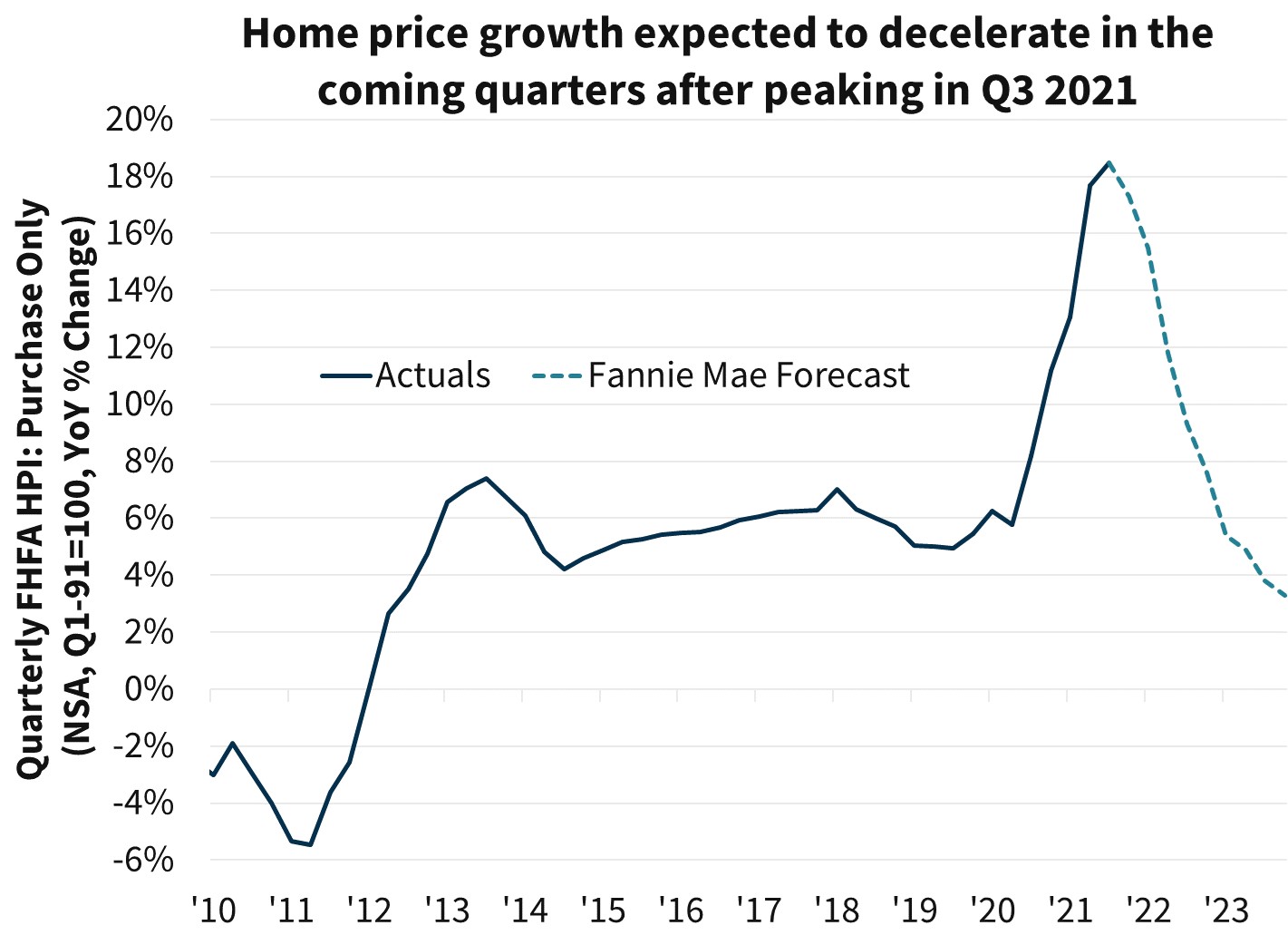 A “new normal” may be on the horizon after a tumultuous year in 2021 which saw a conflagration of market trends reach new highs, and lows, which have continued into 2022.
A “new normal” may be on the horizon after a tumultuous year in 2021 which saw a conflagration of market trends reach new highs, and lows, which have continued into 2022.
According to the Economic and Strategic Research Group (ESR) at Fannie Mae, it is too early to predict the end of the Covid-19 era, but the group expects that 2022 will be a transitional year for both the economy and the housing market.
While the ESR Group predicts inflation to remain elevated throughout the year, it is unknown how much of the economic and housing market shifts seen in the last two years will become permanent, such as shift to remote work. But still, the ESR Group predicts a leveling off of some of the trends seen last year, like home sale prices and house price growth, to a more “reasonable” pace.
According to the FHFA Purchase-Only Index, the latest forecast projects home price appreciation to clock in at a still-brisk 7.6% in 2022, down from 17.3% in 2021. The real GDP growth of 5.5% in 2021, which would represent the strongest annual growth rate since 1984, is predicted to be slightly muted in 2022 and is predicted to be 3.1% in 2022, and a 2.2% growth in 2023.

Supply chain and inflation remain the biggest risks to this forecast, as well as any future interest rate adjustments by the Federal Reserve, which the ESR Group expects to be raised three times this year. The group also predicts inflation, as measured by the Consumer Price Index, to remain elevated around 7% through the beginning of the year but should end the year at about 4%.
"We expect economic growth to continue slowing as the impacts of fiscal stimulus fade and the country's attention increasingly turns to rising inflation," said Doug Duncan, Fannie Mae Senior Vice President and Chief Economist. "The Fed has accelerated the pace at which it intends to reduce monetary accommodation, as inflation appears more resilient than initially expected. Currently, we expect inflation to run above the Fed's two-percent target through 2023, and for the Fed to respond by tightening over that period.”
“The resultant rise in interest rates will likely put additional stress on housing affordability measures vis-à-vis higher mortgage rates for consumers and the continued, though decelerating, rise in home prices,” Duncan continued. “While consumers still have a significantly elevated level of savings, the rate of saving has fallen such that, over time, we believe 'excess' saving will likely be eroded and affordability increasingly constrained. We observe an early indication of this in recent increases in debt-to-income measures associated with incoming mortgage originations."
Click here to view the report in its entirety.

 DSNews The homepage of the servicing industry
DSNews The homepage of the servicing industry









